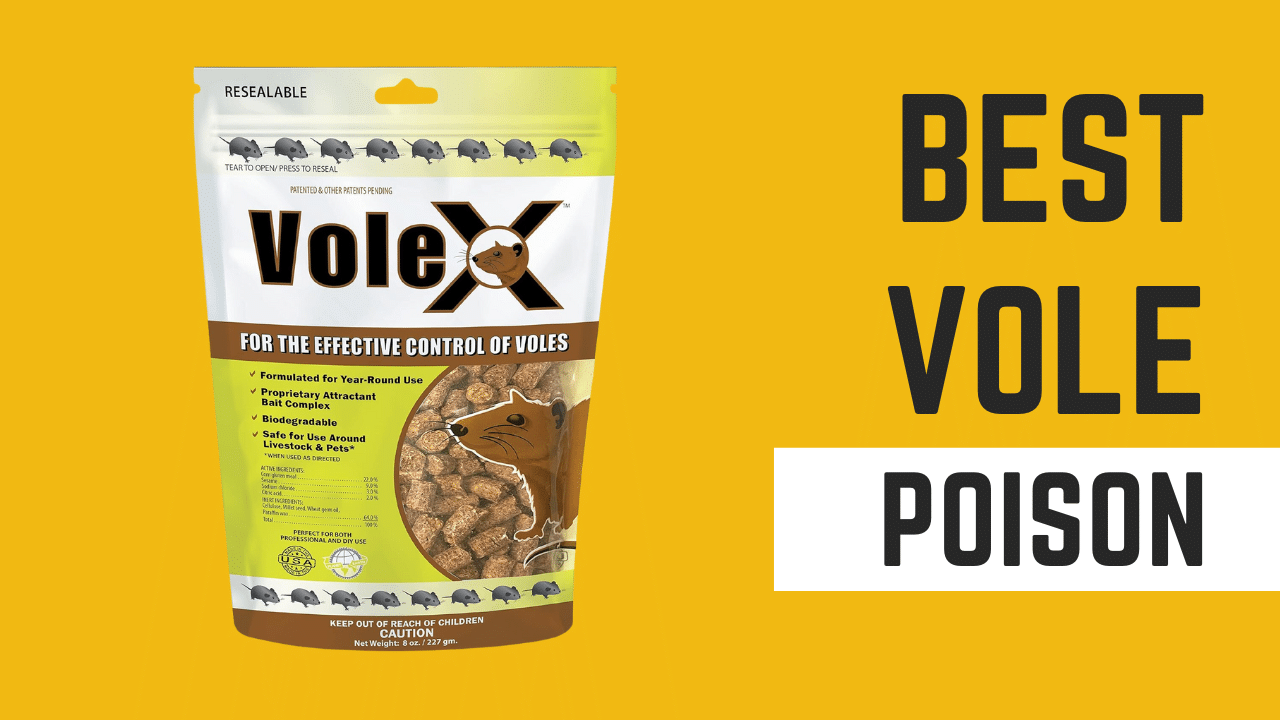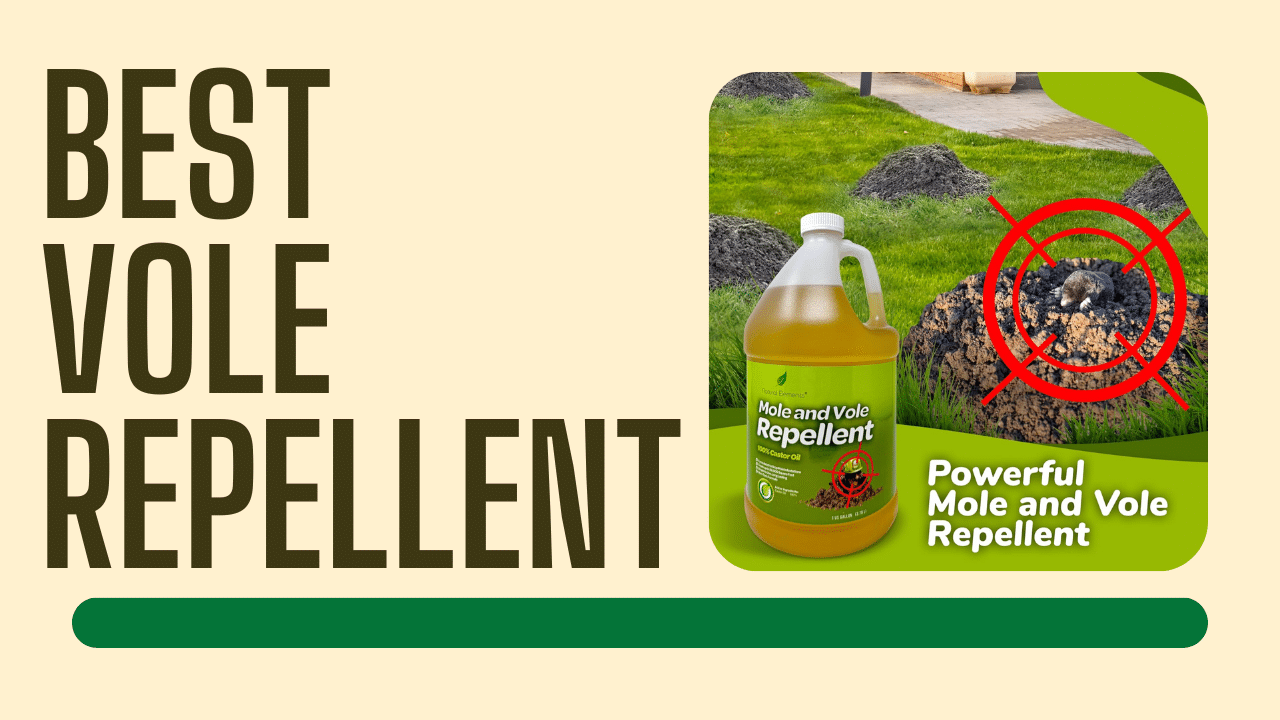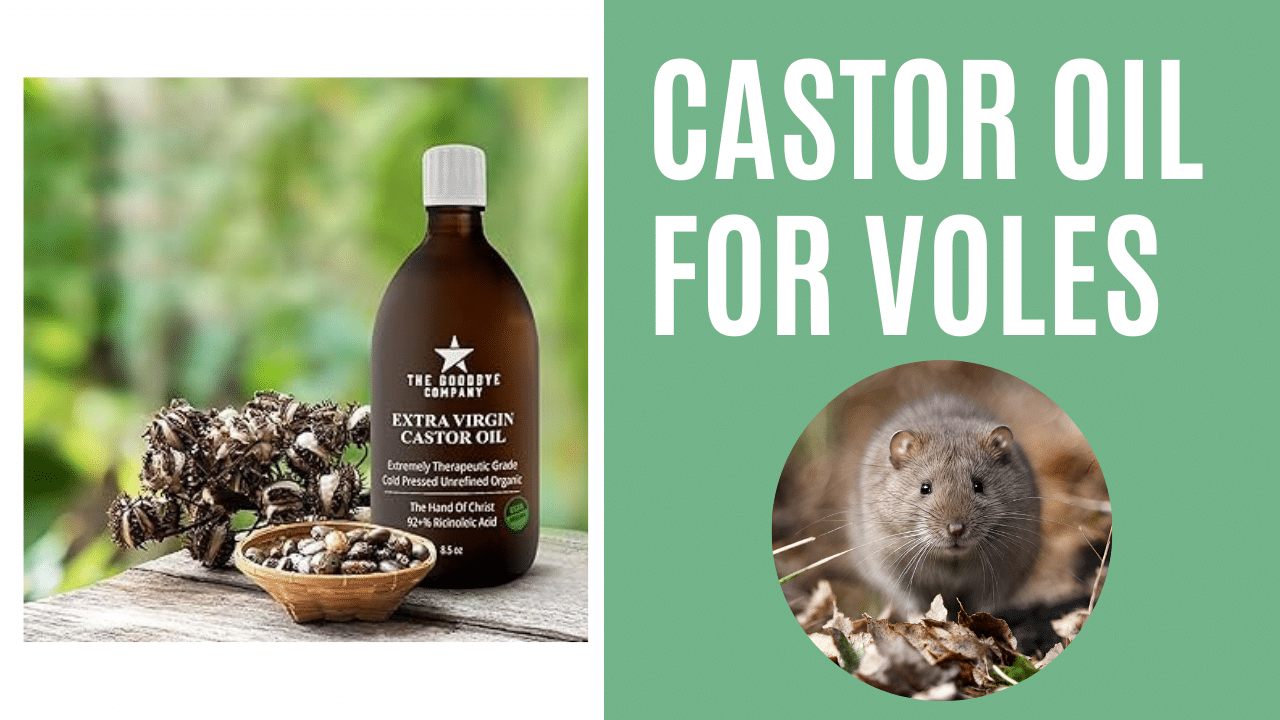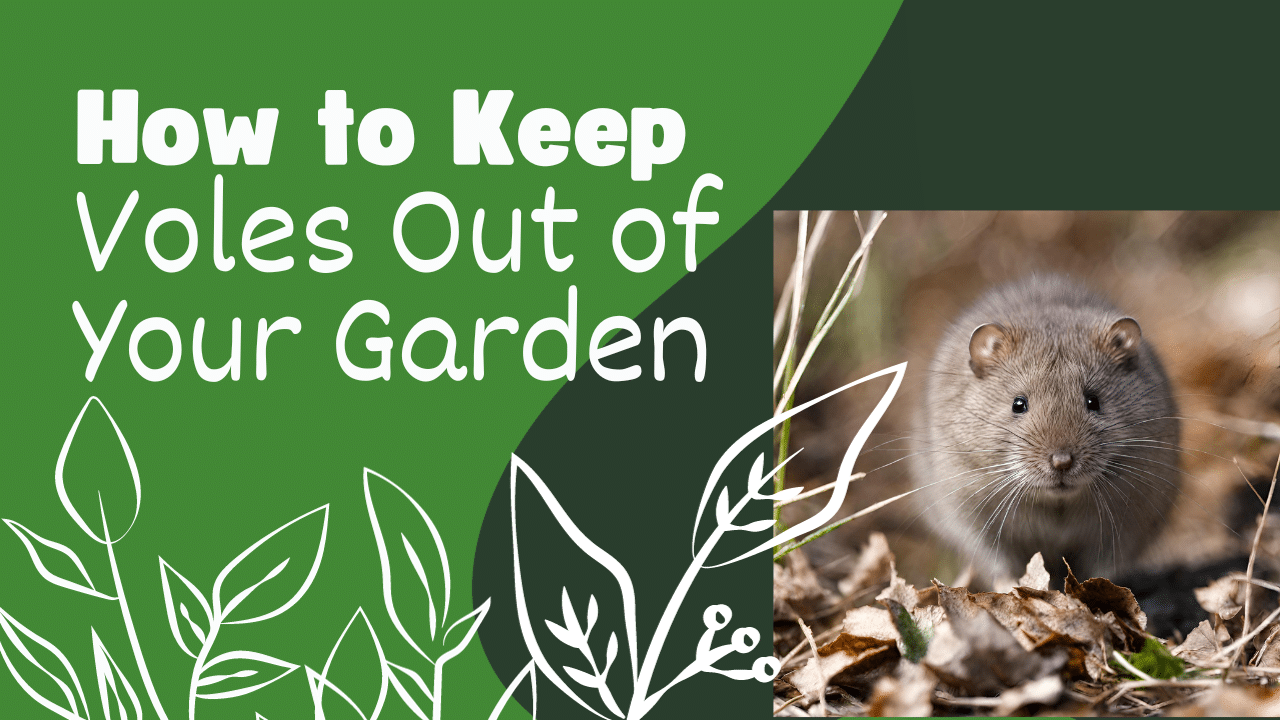
Insects are truly a nuisance. They come in huge numbers, can get in through the smallest spaces, and are sometimes hard to get rid of. Ants in particular are a type of insect that gets into your home and wants one thing: your food. Able to smell food particles from a great distance, ants hone in and do everything they can to get to it. And there’s not just one type of them. They come in several varieties, including one known as the sugar ant.
5 Effective Steps Guide on How to Get Rid of Sugar Ants
Sugar ants are a common problem for homeowners. They can interfere with daily life and make it difficult to relax in your own home. These pests can also cause damage by burrowing through wood floors, walls, and even furniture if they have the opportunity.
Do you want to kill the sugar ants roaming around your home, or do you want to kill all the ants everywhere around your entire property? The good news is that there are steps you can take to get rid of these ants once and for all! You just need to know what method will work best for the location where you’ve seen them most often.
Here are 5 steps on how to get rid of sugar ants that will work for any homeowner:
Step 1: Identify the Ants
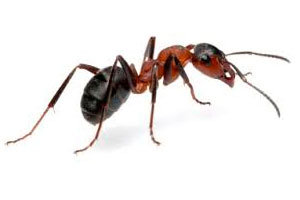
Sugar ants are called that because they’re attracted to food. They can be described as banded sugar houses or as house ants, and are ones you normally see in your home. Their colonies have dirt mounds around them and they usually prefer warm climates. They can get into your house through even the smallest opening.
The species originates from Australia and their natural habitat is forest or woodlands. They are very often found in cities or suburbs.
What Do Sugar Ants Look Like?
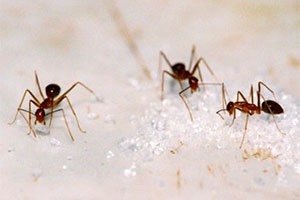
Banded sugar ants look like they’ve got tiny bands around their middle, while house ants are smaller and more uniform in color.
Many people don't realize that among the types of ants out there, flying ants are one of them. To learn more about how to get rid of flying ants, go here.
Step 2: Find Their Point of Entry
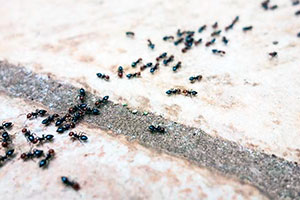
Figure out where the sugar ants are coming in. This may be a crack in the foundation, a hole in your window screen, or a gap around your door. Follow the trail as far back as you can and try and notice the entry point into your home. You can also go outside and look for their colony – small mounds with a hole in the center.
Once you’ve located their entry point, you can take steps to seal it off and keep them from coming in.
How They Get to You In the First Place
Because ants have a sense of smell far greater than that of a human, as well as most other insects, they can detect food from far away. If you’ve got any food out, whether it’s a whole watermelon or just some crumbs, an ant can find it.
There are many ways in which ants can get into your house:
- The foundation: Your home’s foundation can have cracks in it, which then allows the tiny creatures access.
- Doors: If any door that opens to the outside has a poor seal to it, it provides a way for ants to get through.
- Floors: You may have no idea, but ants can crawl underneath your floors, including carpeting. Their trail goes around the house until they appear right where smell your food source.
- Utility lines: Think about it - there are tons of little holes in your walls that connect to the outside. Electrical outlets, phone outlets, plumbing - they’re all openings that allow utilities to get into your house. They can also let insects in, as long as the ants find a way close, they can crawl in through the opening.
Having ants in your yard is one thing, but in your house, it's quite another. More annoying, harder to deal with - you want nothing more than to get rid of them as soon as possible. More details on how to get rid of ants in your house can be found here.
Step 3: Use a Bait Trap
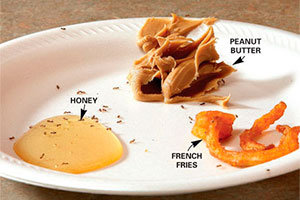
If the ants are already in your home, the next step is to use a bait trap. This is a small container filled with something that the ants find irresistible, such as sugar or honey. The ants will eat the bait and then carry it back to their nest, where it will kill the entire colony.
Ant Baiting
When you use bait to get rid of ants, the idea is that they’ll take the substance back to their colony. Some sort of poison is mixed in with the bait, which the ants will take to the colony as food. Once ingested, the poison then kills the ants. This is a good way to kill ants in the colony that normally wouldn’t come out, including the queen.
I suggest buying the following product:
- Ants are attracted to the bait and take it back to their colony, along with the poison laced throughout.
- Active Ingredient: 5.4% Borax (Sodium Tetraborate Decahydrate).
- Non-toxic and safe around children and pets.
Ant Trapping
You can also trap the ants that are invading your house instead of baiting them, by setting out something extremely sticky, like honey or corn syrup. The insects will get stuck in it, unable to get out, where you can then destroy them.
Make sure you realize that trapping isn’t the same as baiting and that trapping and killing ants won’t destroy the colony that is causing the ant problem in the first place.
For trapping ants, consider this product:
- Put these stakes in the ground outside and watch your ant problem disappear.
- Active Ingredient: 1% Hydramethylnon.
- Sugar ants are attracted to and destroyed by this dual-action solution.
- Made in the USA.
Step 4: Use an Insecticide
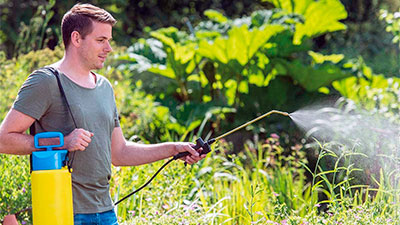
For further home protection against sugar ants, spray ant repellent around your property and home. Do you want to go organic? Herbs, plants, oils, and products meant for keeping future ants away do their job well and are readily available.
There are things you can use that will keep any new ants from coming near your house:
- Plants: Herbs like peppermint, sage, and tansy are known to keep ants at bay. Plant them around your yard or keep a herb garden in your kitchen.
- Garlic: Garlic has such a strong odor that it confuses the ants and throws their scent trail off.
- Sprays: You can make an ant repellent spray by mixing water with substances like garlic, lavender, or peppermint. Spray it in your kitchen and pantry, as well as any areas you suspect ants might get in.
Insect killers often contain ingredients harmful to not just humans, but pets as well. Since animals are naturally curious, it's easy for them to get into ant products that could hurt them. To learn more about pet safe ant killer, click here.
For guidance tips on how to get rid of ants in the kitchen, read my 5-step guide.
The Natural Ways: 3 Best Ant Sprays Made with Natural Ingredients
You may want a solution that doesn’t involve any kinds of harsh chemicals. Fortunately, many solutions for you use ingredients perfectly safe for children and pets.
Some organic products you can find on the market include:
- This spray uses all-natural ingredients including Lemongrass Oil and Geraniol to kill ants and keep them away. Geraniol is an essential oil used in flavorings. It attracts bees.
- It’s safe to use indoors and outdoors.
- It kills ants on contact and for up to a month after application.
- The active ingredients are 1.5% Peppermint oil and 1.5% Rosemary oil.
- It repels ants if sprayed on their trails, and kills them if sprayed directly on them.
- Safe to use around children and pets.
- The main ingredient is 4.2% Cedarwood oil, an essential oil beneficial to humans, but harmful to insects.
- It kills indoor and outdoor ants on contact.
- This biopesticide is eco-friendly.
Home Remedies: How to Make an Ant Killer Spray at Home
Ants live in colonies made up of thousands of individuals. The ants, acting in harmony, each have a specific role. As you see them, you can kill ants one at a time, but you'll never eliminate your ant problem that way. You need to know how to get rid of ant hills to get rid of all your ants.
Although ants have a home base, certain ones must leave the nest to search for food. Those ants secrete a pheromone that scents the trail they follow during their search. Other ants can follow that trail to and from the nest and the food source.
You'll know you've spotted an ant trail when you see a long line of ants. Disturbing the path interferes with food gathering. Like every other living creature, ants need food. Disturb them enough, and they'll move their nest somewhere else.
Easy Homemade Recipes
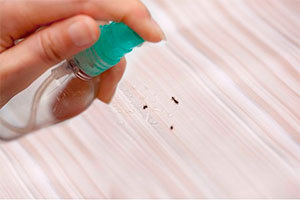
Common ingredients in homemade ant sprays include:
- Vinegar - You can use white or apple cider vinegar. You can use either full strength, mixed half and half with water, or in combination with other ingredients.
- Essential oils - most have a strong fragrance that ants can’t tolerate. Because essential oils are potent, dilute a few drops in a cup of water. The most effective oils are clove, peppermint, and tea tree. Cinnamon is another good choice. You can combine essential oils with any of the other ingredients.
- Dish soap - as with vinegar, you can use it alone, diluted, or mixed with other products including vinegar.
- Citrus - ants are repelled by the smell of lemon, orange, grapefruit, and other citrus fruits. Place the peels or spray the juice on ant trails near their nests.
- Borax and Boric Acid - you can add these powders to any of the above recipes, but you'll need to heat the water to dissolve them. Both these are toxic to children and pets, so you'll need to be careful where you use the ant sprays if you add them to your other ingredients.
For many ant remedies, look no further than your kitchen or grocery store.
Here are some ideas when it comes to home remedies:
-
This white powder is the crushed up remains of marine phytoplankton. For humans and pets, it’s completely non-toxic. However, for insects, the substance is deadly. Diatomaceous Earth gets into their digestive system and kills the ants from the inside out. Sprinkle the powder into a food source like shortening and mix until crumbly. Place a pile around an ant trail, or anywhere you might suspect them to be lurking.
-
Borax is powder from Boric Acid, derived from the element Boron. It’s toxic to insects and destroys their digestive system as well as irritates their exoskeleton. You can buy Borax in the laundry aisle of the grocery store. To use against sugar ants, mix borax with something the ants will want to consume like jelly, honey, or peanut butter. Leave it out for the ants to take back to the colony, sharing it with the other ants and thus poisoning them all. Be careful to mix only as much Borax as a homemade ant killer recipe says, as too much will kill the ants before they can reach the colony. Too little won’t be effective enough and will keep the ants alive.
-
Essential Oil Spray
Essential oils have many uses, one of which is a bug killer.
Mix Clove Oil, Orange Oil, and Vinegar in water and spray all around the ant trail.- Clove Oil is caustic and has a strong smell that throws off the ants’ scent trail.
- Orange Oil contains compounds that are toxic to ants.
- Vinegar also throws off the scent trails and deters them from crossing that area again.
Step 5: Prevent Sugar Ants From Coming Back

Sealing off their entry points, cleaning up food spills immediately, or using a pesticide regularly to keep them from returning are all excellent methods for preventing sugar ants from coming back into your home.
Questions & Answers
Ants have pincers they can bite people with. No need to worry, as their bite isn’t poisonous, but it can leave a bump. Sometimes the bite will itch. Sometimes, sugar ants can spray formic acid, which might burn, but again, it’s not poisonous.
Yes, you can use apple cider vinegar to get rid of small ants, because they eat sweet foods. So spray vinegar near sweet food sources and along the trail where they come from. You can also fill a cap with apple cider vinegar and add a little dish soap to break surface tension and leave it outside where ants are entering your house. If you don't have any apple cider vinegar, just use white distilled vinegar or lemon juice. The ants will pick up that smell too!
Conclusion: What is the Most Effective Way?
If you’re looking for the most effective way to kill ants for good, baiting is your best bet, as it kills the source of your ant problem. For a way to kill the ants you see right when you see them, homemade sprays can do the trick quickly.
Let’s face it – sugar ants are annoying. Their sheer number can drive you crazy and it seems like no matter what you do, they just keep coming. But you don’t need to put up with them. Decide which way you want to go about removing them, and get rid of the pests not just for now, but for good.
If you follow our 5 steps, you can be sure that your home will be ant-free in no time.
Contents

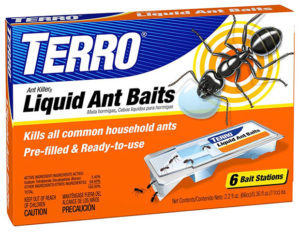
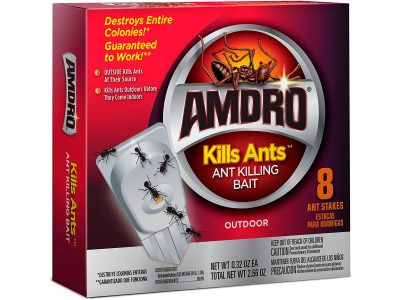

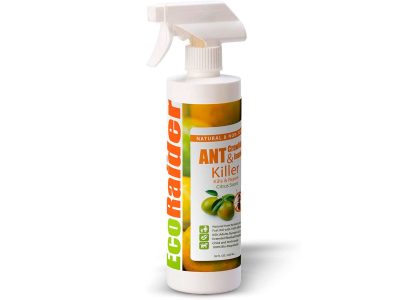
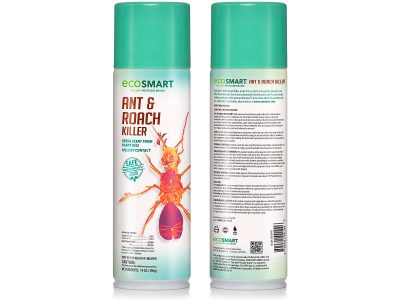
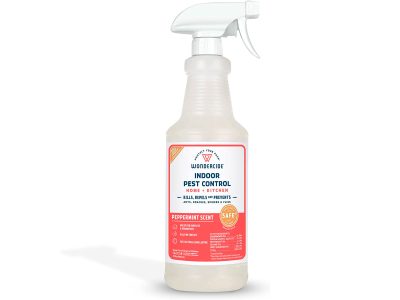
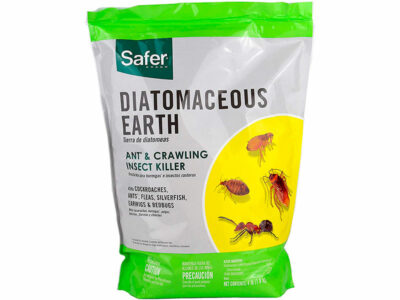
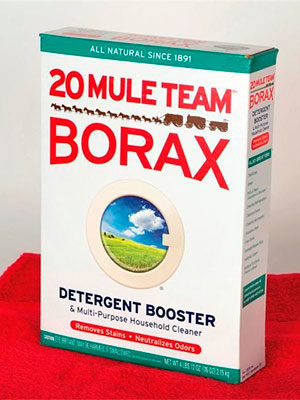
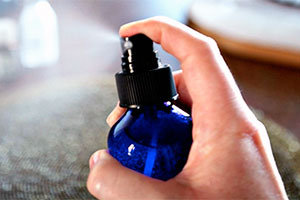 Essential oils have many uses, one of which is a bug killer.
Essential oils have many uses, one of which is a bug killer.
